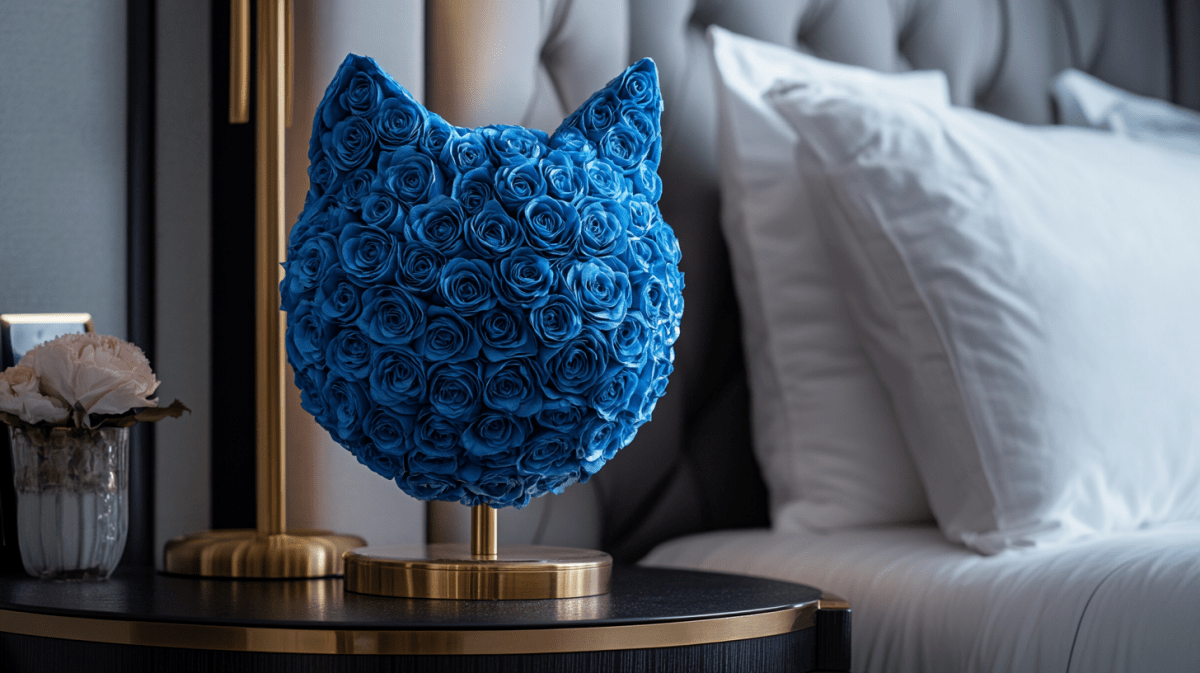
Want to explore rose gifts in this color?
Blue Rose Etiquette – How to Gift Blue Without Sending the Wrong Message
Blue roses have an undeniable allure. They’re mysterious, mesmerizing, and utterly unique. Unlike their red, pink, or yellow counterparts, blue roses do not occur naturally, making them a rare and imaginative gift steeped in symbolism and mystery.But their rarity comes with a caveat. Their meaning isn’t straightforward, and without careful thought, they could convey a message you didn’t intend. This guide explores the art of gifting blue roses, ensuring your gesture is not only meaningful but also unmistakable in its intention.
The Symbolism of Blue Roses
A. Emotional and Psychological Associations
Blue evokes feelings of calmness, depth, and mystery. It’s a color often associated with the ocean’s vastness or the sky’s infinite expanse. Translating this into floral terms, blue roses represent the unattainable, the extraordinary, and the unknowable. They are perfect for celebrating the rare and the indefinable in people or experiences.
B. Cultural Interpretations
The symbolic meaning of blue roses varies by culture:
- Western Culture sees blue roses as symbols of fantasy, spiritual love, and profound mystery. They are often tied to concepts that challenge the ordinary, expressing admiration for those who defy convention.
- Eastern Traditions, meanwhile, link blue roses to wisdom, tranquility, and ideals that may seem out of reach.
Given their modern origins, blue roses lean towards being icons of individualism and abstract beauty rather than adhering to romantic traditions.
C. Modern Contexts in Pop Culture and Art
With their ties to art, literature, and pop culture, blue roses frequently embody dreamlike devotion, singularity, and introspection. Their value as a gift lies in their versatility, making them an excellent choice for personalized expressions and conceptual celebrations rather than routine rituals.
When to Gift Blue Roses
A. Symbolic or Philosophical Gifting
Blue roses are ideal for expressing admiration for someone’s unique personality or enigmatic charm. They’re a perfect fit for thinkers, writers, and creatives who appreciate abstract ideas and the unconventional.Example: Gift a single blue rose to an artist friend with a note that says, “For someone who turns the unattainable into masterpieces.”
B. Support and Encouragement
For someone navigating uncertainty, personal growth, or change, blue roses can symbolize hope and perseverance. They’re a subtle, poetic way of saying, “I believe in you,” without leaning on overused clichés.Example: Gifting blue roses to a friend starting a new business venture with the note, “A rare bloom for someone creating the extraordinary.”
C. Celebration of Non-Traditional Love
For relationships outside traditional frameworks, such as platonic soulmates, LGBTQ+ partnerships, or long-distance connections, blue roses convey love and admiration that doesn’t fit conventional categories.Example: A bouquet of blue roses for a best friend could express, “To a bond as rare and unmatched as this color.”
How to Avoid Miscommunication with Blue Roses
A. Understand the Context
Blue roses aren’t a default substitute for red or pink roses, especially in traditional romantic situations. Their meaning is often abstract or symbolic, so ensure the occasion suits their unique message.Avoid gifting them in formal or traditional settings where their unconventional nature might cause confusion.
B. Know the Recipient
Blue roses resonate with those who appreciate metaphor, art, and subtlety. They might not be the best choice for someone who prefers straightforward or conventional expressions.
C. Add a Clarifying Message
A thoughtful message can prevent misinterpretations and enhance the gesture’s significance. Consider phrases like:
- “A rose as unique as you are.”
- “A rare bloom for someone who inspires the impossible.”
- “A token of depth, trust, and awe.”
Presentation and Pairings for Blue Roses
A. Elegant Styling
The mystique of blue roses can be elevated with thoughtful styling:
- Pair them with silver, white, or deep green foliage to highlight their rare hue.
- Presentation options like preserved blue roses in glass domes or dark-toned, luxury boxes emphasize their uniqueness.
B. Complementary Flowers
Combine blue roses with complementary florals like lavender, baby’s breath, or soft white orchids for a balanced arrangement. Be cautious of bright, clashing colors that might detract from the blue roses’ enigmatic appeal.
C. Minimalist Wrapping
Choose wrapping that lets the roses shine. Matte paper in neutral tones such as navy, grey, or ivory allows the blue to take center stage, reinforcing their elegant simplicity.
Number Etiquette for Blue Roses
A. Meaning by Quantity
The number of roses you gift can also carry meaning:
- 1 Rose: A singular, enigmatic gesture.
- 3 Roses: Admiration for someone’s inner world.
- 7 Roses: A deeply intellectual or spiritual connection.
- 9 Roses: Enduring mystery and a bond that transcends the ordinary.
Avoid gifting the traditional dozen roses unless you’re making an intentional statement or subverting expectations.
B. Regional Interpretations
Cultural nuances matter:
- Western Europe and North America are generally open to symbolic gifting, especially within artistic or intellectual circles.
- Asia may associate specific numbers with particular meanings, so pairing blue roses with clarifying notes or artistic presentation ensures their message is understood.
Gifting the Unseen, the Rare, the Infinite
Blue roses aren’t just flowers; they are gestures loaded with thought and intention. When gifted with mindfulness, they can inspire awe, contemplation, and joy rather than confusion.The key to gifting blue roses is understanding their unique symbolism and tailoring them to your recipient and occasion. Thoughtfulness turns this extraordinary floral choice into a moment that’s as unforgettable as the person receiving them.
Want to learn more about flower gifting etiquette?
- Discover how Forever Roses are gifted around the world.
- Explore regional pages like Japan, United Kingdom, and China.











